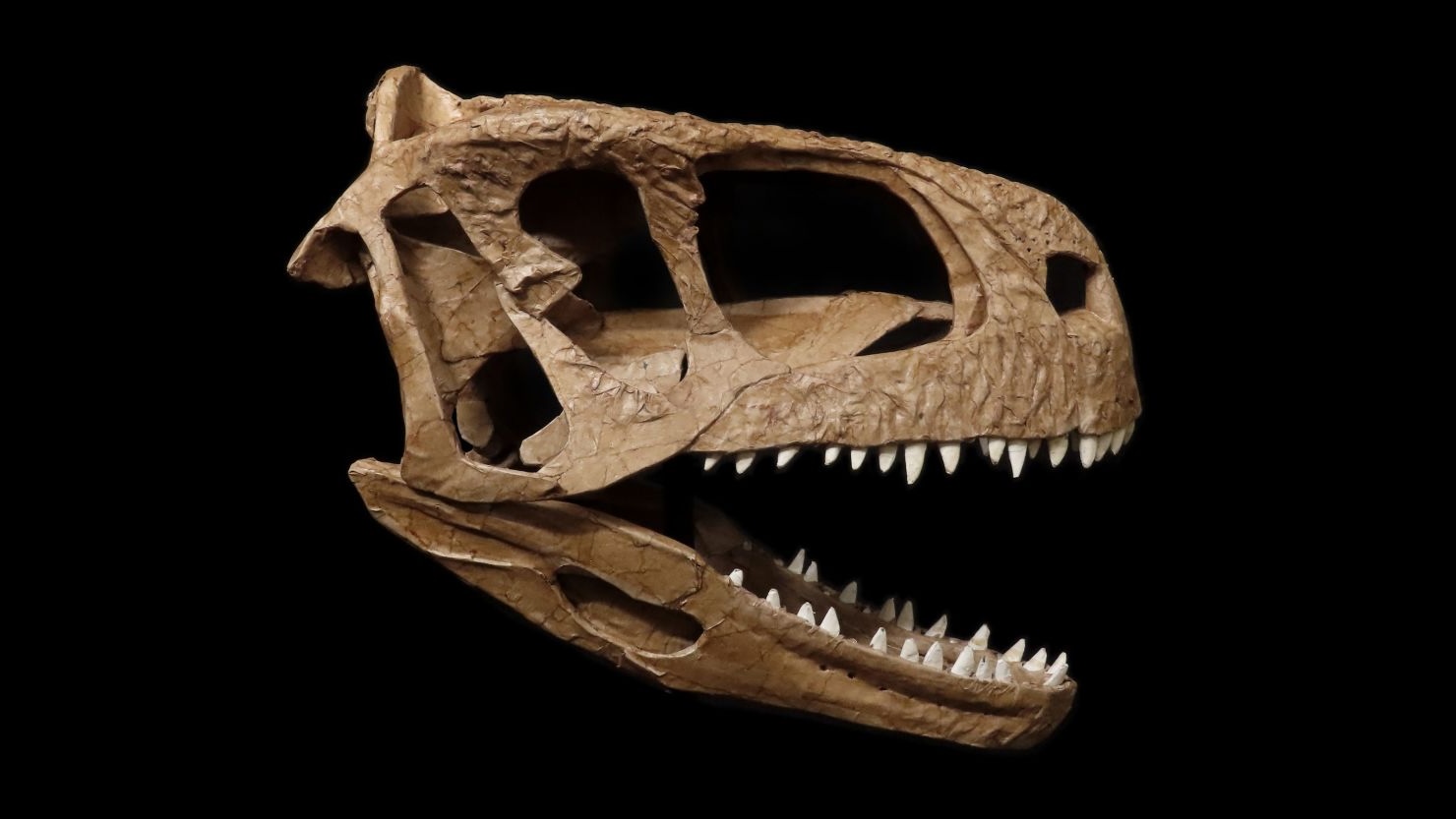
Llukalkan aliocranianus is a name that might sound like a spell from a fantasy novel, but it's actually a fascinating dinosaur species. Unearthed in Argentina, this predator roamed the Earth around 80 million years ago. Imagine a creature with a skull full of air pockets, making it lighter and possibly giving it a unique roar. Llukalkan means "one who causes fear," and with its sharp teeth and powerful build, it certainly lived up to its name. This dinosaur was part of the abelisaurid family, known for their short arms and fierce hunting skills. Ready to dive into the world of this ancient terror? Let's uncover 34 intriguing facts about Llukalkan aliocranianus!
Key Takeaways:
- Llukalkan Aliocranianus was a fearsome carnivorous dinosaur that lived 85 million years ago in Argentina. Its unique skull and powerful bite force made it a top predator in its semi-arid habitat.
- This discovery in 2015 has provided valuable insights into the evolution and diversity of theropod dinosaurs, contributing to our understanding of prehistoric life in South America.
What is Llukalkan Aliocranianus?
Llukalkan Aliocranianus is a fascinating dinosaur species that roamed the Earth millions of years ago. This predator has intrigued scientists and dinosaur enthusiasts alike. Let's dive into some captivating facts about this ancient creature.
- Llukalkan Aliocranianus lived during the Late Cretaceous period, around 85 million years ago.
- The name Llukalkan means "one who causes fear" in the Mapuche language, reflecting its fearsome nature.
- Aliocranianus translates to "different skull," highlighting its unique cranial features.
- This dinosaur was discovered in the Patagonia region of Argentina.
- Llukalkan Aliocranianus belonged to the Abelisaurid family, a group of theropod dinosaurs.
- It was a carnivore, preying on other dinosaurs and possibly scavenging.
- The skull of Llukalkan Aliocranianus had distinctive bumps and ridges.
- Llukalkan Aliocranianus had a short, deep snout, unlike many other theropods.
- Its teeth were sharp and serrated, perfect for tearing flesh.
- This dinosaur had short arms with two fingers, similar to its relative, the T. rex.
Physical Characteristics of Llukalkan Aliocranianus
Understanding the physical traits of Llukalkan Aliocranianus helps paint a clearer picture of this ancient predator. Here are some intriguing details about its appearance.
- Llukalkan Aliocranianus was approximately 5 meters (16 feet) long.
- It weighed around 1,000 kilograms (2,200 pounds).
- The legs of Llukalkan Aliocranianus were strong and muscular, built for running.
- Its tail was long and stiff, aiding in balance and agility.
- The eyes of Llukalkan Aliocranianus faced forward, providing good depth perception.
- Llukalkan Aliocranianus had a robust, compact body structure.
- The skin of this dinosaur was likely covered in scales or small bony plates.
- Llukalkan Aliocranianus had a powerful bite force, capable of crushing bones.
- Its jaws could open wide, allowing it to consume large chunks of meat.
- The nostrils were positioned on the top of its snout, possibly aiding in a keen sense of smell.
Habitat and Lifestyle of Llukalkan Aliocranianus
Exploring the habitat and lifestyle of Llukalkan Aliocranianus provides insight into how it survived and thrived in its environment.
- Llukalkan Aliocranianus lived in a semi-arid environment with seasonal rainfall.
- It inhabited areas with open plains and sparse vegetation.
- Llukalkan Aliocranianus likely hunted in packs, similar to modern-day wolves.
- This dinosaur may have had a territorial nature, defending its hunting grounds from rivals.
- Llukalkan Aliocranianus could have been an apex predator in its ecosystem.
- It possibly competed with other large carnivores for food and territory.
- Llukalkan Aliocranianus might have used vocalizations to communicate with others of its kind.
- This dinosaur could have had a keen sense of hearing, aiding in hunting and detecting danger.
- Llukalkan Aliocranianus likely laid eggs, as most theropods did.
- The young of Llukalkan Aliocranianus might have been cared for by parents or the pack.
Discovery and Significance of Llukalkan Aliocranianus
The discovery of Llukalkan Aliocranianus has provided valuable information about the diversity and evolution of theropod dinosaurs.
- Llukalkan Aliocranianus was discovered in 2015 by a team of paleontologists.
- The fossils were found in the Bajo de la Carpa Formation in Argentina.
- This discovery has helped scientists understand the evolution of abelisaurids.
- Llukalkan Aliocranianus has contributed to the knowledge of dinosaur diversity in South America.
The Final Roar of Llukalkan Aliocranianus
Llukalkan Aliocranianus, a fascinating predator, roamed ancient Patagonia around 80 million years ago. This dinosaur, whose name means "one who causes fear," had a unique skull structure with air-filled cavities, possibly aiding in better hearing or reducing skull weight. Its discovery sheds light on the diverse ecosystem of the Late Cretaceous period. With its formidable teeth and robust build, Llukalkan was a top predator, likely hunting large herbivores. The study of such creatures helps paleontologists understand the evolutionary paths and ecological dynamics of prehistoric times. Each fossil find adds a piece to the puzzle of Earth's distant past, offering glimpses into the lives of these incredible beings. Llukalkan Aliocranianus stands as a testament to the rich and varied history of life on our planet, reminding us of the ever-changing nature of existence.
Frequently Asked Questions
Was this page helpful?
Our commitment to delivering trustworthy and engaging content is at the heart of what we do. Each fact on our site is contributed by real users like you, bringing a wealth of diverse insights and information. To ensure the highest standards of accuracy and reliability, our dedicated editors meticulously review each submission. This process guarantees that the facts we share are not only fascinating but also credible. Trust in our commitment to quality and authenticity as you explore and learn with us.
